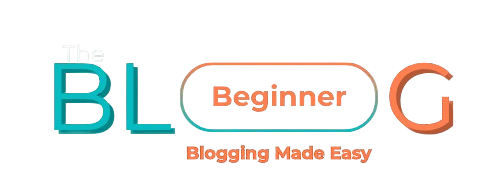The Complete WordPress Setup Guide for Beginners: From Hosting to Hello World
Table of Contents
Feeling overwhelmed by WordPress? You’re not alone.
It can seem complicated — but once you know the steps, it’s surprisingly simple 💻✨
In this beginner-friendly guide, we’ll walk you through every step of setting up WordPress, from choosing a host to publishing your first post.
Let’s turn your blank site into a real blog — fast and stress-free.
🧭 1. Choose a Reliable Hosting Provider
Your hosting is the home for your blog.
We recommend Hostinger for beginners because it’s:
- Affordable
- Fast
- Easy to use
- Includes 1-click WordPress install + free domain + SSL
📌 Full walkthrough: Website Setup Guide
🌐 2. Pick and Register Your Domain Name
Tips for choosing your domain:
- Keep it short and memorable
- Avoid numbers or dashes
- Use a “.com” extension
- Check availability on Namecheap or Hostinger
📌 Example: myblogjourney.com
⚙️ 3. Install WordPress (One Click)
Most hosts offer an easy setup.
In Hostinger:
- Go to your dashboard
- Choose “Auto Installer”
- Select WordPress
- Enter your admin info
- Click “Install”
Done — you’re officially a blogger 🎉
🔐 4. Secure Your Blog
Immediately after installing WordPress:
- Enable SSL (your URL should show https://)
- Change your login URL (use a plugin like WPS Hide Login)
- Create a strong admin password
- Limit login attempts with Wordfence or similar
📌 Full security guide here: Website Tools for Bloggers
🧰 5. Set Basic WordPress Settings
Go to Settings → General:
- Site Title = Your blog’s name
- Tagline = Optional description (or leave blank)
- Timezone = Match your local time
- Membership = Leave unchecked
- Language = English (or your preference)
Then head to Settings → Permalinks:
- Choose Post name → https://yourdomain.com/sample-post/
- Click Save
📌 This improves SEO and keeps your links clean.
🎨 6. Choose and Customize Your Theme
Pick a theme that’s fast, responsive, and beginner-friendly.
Recommended themes:
- Blocksy
- Astra
- Kadence
- GeneratePress
Customize via:
- Appearance → Customize
- Change logo, colors, fonts, header, footer
📌 Full design help in our Website Design Guide
🧩 7. Install Essential Plugins
Here are the basics:
- 🔍 Rank Math SEO – optimize your posts
- 🧼 LiteSpeed Cache – improve speed
- 🔒 Wordfence – add security
- 📨 FluentSMTP – fix email delivery
- 📝 Contact Form 7 – create forms
To install:
- Go to Plugins → Add New
- Search for plugin
- Click “Install” then “Activate”
📝 8. Create Key Pages
Start with:
- Home
- About
- Contact
- Blog (for all posts)
- Privacy Policy & Terms (for legal + SEO)
Use Pages → Add New and the Block Editor to build them.
📌 Not sure what to write? Visit our About Page Guide
✍️ 9. Publish Your First Blog Post
Go to Posts → Add New
Start with:
- A helpful topic
- A catchy headline
- Clear intro + main points + conclusion
- Internal links to your pages
Then hit Publish ✅
✅ Final Thoughts
You don’t need to be a tech expert to build a blog.
With the right tools and simple steps, you’ll have a working, beautiful blog in just a few hours.
📌 Next up: Want to make your blog even better? Let’s explore → Themes & Plugins
